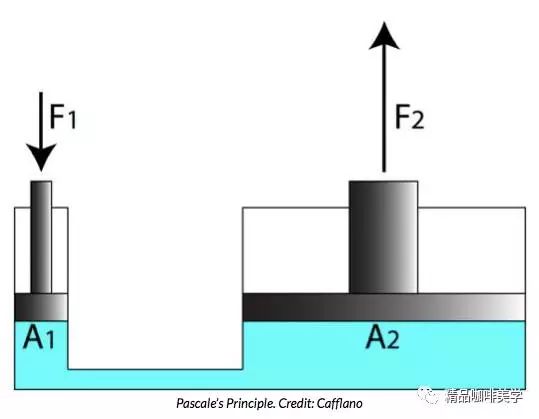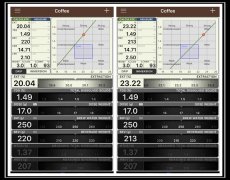What is the extraction pressure of espresso? On the effect of pressure on extraction Italian concentration

What kind of role does pressure play in the whole process of Italian concentration? And why is it usually recommended to use 9bar pressure to make coffee?
First of all, let's talk about stress.
The pressure we are talking about is atmospheric pressure (barometric), which is the pressure exerted by the atmosphere due to gravity, in other words, the pressure at sea level under standard atmospheric conditions. When making espresso, we usually use the atmospheric pressure of 9bar, or nine times the air pressure at sea level.
Espresso has a long history, and 9bar has always been regarded as the best ideal value for extracting espresso. The concept of 9par can be taken as an example of a car. A car tire will indicate that the air pressure in the tire needs to be maintained at 32psi, so 9bar is equivalent to 130psi, which is more than four times the air pressure in the tire.
Control the pressure for extraction
Imagine what will happen if you use hot water with 9bar pressure to directly extract coffee powder. It may be that the water washes away the coffee powder, and the hot water passes quickly through the coffee powder, precipitating only some melanin, and it tastes bad.
Hence the birth of Coffee pressed powder.
The extraction with reasonable grinding degree will form what we often call "Coffee pressed powder", which gives the water a reaction force in the confined space, and the coffee pressed powder with lower density increases the time for the water to stay in the powder bowl, so that the coffee can be extracted more evenly, and the uniform and flat surface area of pressed powder also plays a role in controlling pressure.
Can you change the pressure according to the flavor trend?
Depending on the formula of the coffee, the precision to the time of coffee extraction is also variable, but it is basically between 20ml and 30s. Lower air pressure may require longer extraction time; higher air pressure shortens the extraction time of espresso. However, the truth is much more complicated, because coffee needs to be extracted correctly on the premise of taste, and if other parameters are wrong, even if the pressure is increased, drink a cup for 12 seconds.
The extracted Espresso may not give you a good experience.
The precise extraction time also takes into account many other factors: grinding scale, coffee beans (freshness and roasting), water temperature, weight of coffee liquid and personal preference.
Some people like to use a variable pressure: before rushing the pressure to 9bar, use low pressure to pre-soak, and then end the extraction at the same low pressure as at the beginning. Maxwell Colonna-Dashwood advocates the use of 6bar pressure for extraction. The low pressure of 6bar can weaken the defects caused by powder distribution errors, and a slower flow rate can make the internal temperature of pressed powder consistent, resulting in a higher extraction rate and less deviation. Coffee is like this, there are always more extraction ideas for us to constantly explore and innovate.
However, although coffee changes from year to year, the number of 9bar is still our regular reference. If you want to control the air pressure flexibly, only those high-end Italian coffee machines with pressure-variable performance can do it.

The influence of pressure on Crema
This is another point that we often confuse: Crema.
This layer of beautiful golden crema floating on freshly extracted espresso can only be seen by applying air pressure above 7-9bar. Crema is made up of oil and fat in coffee, so it also depends on coffee beans.
Without stable and sufficient pressure, you can't get a beautiful crema.
How does the coffee machine maintain stress?
How does the coffee machine maintain the 9bar pressure throughout the extraction process? The most common choices are piston pressure rod type, steam or pump pressure. The original espresso machine used a piston press, and some retro cafes still use it because baristas have ultimate control.
However, operating the machine requires a certain amount of skill and experience. After the handle is finished, press the pull rod down to drive the piston device up; when the position of the piston is higher than the intake hole of the hot water, the hot water will begin to flow into the confined space; when the barista feels that the hot water has soaked all the coffee powder in the powder bowl, he pushes the pressure rod up, and the piston device is pressed down by the spring to begin the extraction of coffee.
There is a high pressure chamber in the steam coffee machine, which uses the liquid to gaseous volume expansion in the enclosed space to produce pressure, and the coffee is extracted by high temperature steam. But the air pressure of the steam coffee machine can only reach 3-5bar, so it can not produce rich oil.
Pump steam coffee machine is the most common type we see in coffee shops, it has double pressure, the use of pressure pump directly heated water pressure through the powder bowl to extract coffee, so the pressure of pump coffee machine is greater, the maximum pressure can reach 15bar.
Although there are many influencing factors in making espresso, understanding the effect of pressure on extraction can help you make a satisfactory espresso, and if possible, you can change the pressure of the machine for extraction testing. you will find that espresso is more attractive than that.
Important Notice :
前街咖啡 FrontStreet Coffee has moved to new addredd:
FrontStreet Coffee Address: 315,Donghua East Road,GuangZhou
Tel:020 38364473
- Prev

Distance of 7 grams of coffee solution-compare the extraction rate of hand-brewed and pressed coffee pots Coffee extraction formula
Professional barista communication please pay attention to coffee workshop (Weixin Official Accounts cafe_style) brewing coffee needs to adjust the grinding thickness according to different equipment, basically can take brewing time to judge: for example, the longer the brewing time (such as French filter pot), the coarser the ground particles; the shorter the brewing time (such as Italian coffee machine), the finer the particles. Look at it another way, when
- Next

The extraction standard of espresso the traditional Italian formula and the different deduction of the extraction standard by SCAA
Communication of professional baristas Please pay attention to the coffee workshop (Wechat official account cafe_style) Italian concentrated extraction judgment plays an important role in a coffee shop that pays attention to coffee quality, because Italian concentrate is not like coffee brewed by hand, French filter pot, or siphon (Saifeng kettle). After brewing, you can take a sip to confirm the flavor and quality of the coffee.
Related
- What is the meaning of lactic acid fermentation with coffee bean treatment?
- How to judge the state of foam by sound?
- How does the latte pull out the unicorn pattern? Come to get for a little trick to improve the flower pull!
- Will flower pulling affect the taste of the latte?
- Do you know the history of coffee?
- The difference between honey treatment and sun washing what is raisin honey treatment?
- What kind of milk can a novice use to make coffee foam to keep the foam longer? The correct method and skills of milking tutorial sharing
- Why do washed coffee beans taste sour? Flavor characteristics of washed Coffee
- Introduction to the skill of how to practice the size and height of water injection around the circle of hand-brewed coffee
- How do beginners practice coffee flower drawing from scratch?

